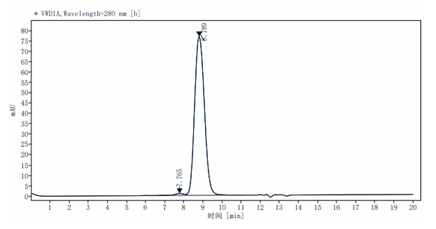17-25kDa (Reducing)
1.Shuang Qin, Linping Xu, Ming Yi, Shengnan Yu,Kongming Wu & Suxia Luo: Novel immune checkpoint targets: moving beyondPD-1 and CTLA-4: MolecularCancer volume 18, Article number: 155 (2019).
Cytotoxic T-lymphocyte-associated protein 4 (CTLA-4) is an inhibitory receptor belonging to the CD28 immunoglobulin subfamily, expressed primarily by T-cells. The family includes CD28, CTLA-4 and ICOS as well as other proteins including PD-1, BTLA and TIGIT.Its ligands, CD80 and CD86, are typically found on the surface of antigen-presenting cells and can either bind CD28 or CTLA-4, resulting in a costimulatory or a co-inhibitory response, respectively. Because of its dampening effect, CTLA-4 is a crucial regulator of T-cell homeostasis and self-tolerance. The mechanisms by which CTLA-4 exerts its inhibitory function can be categorized as either cell-intrinsic (affects the CTLA-4 expressing T-cell) or cell-extrinsic (affects secondary cells). CTLA-4 mainly acts in a cell-extrinsic manner via its competition with CD28, CTLA-4-mediated trans-endocytosis of CD80 and CD86, and its direct tolerogenic effects on the interacting cell.
2μg (R: reducing condition, N: non-reducing condition).


Immobilized CTLA-4/CD152 His Tag, Cynomolgus (Cat. No. UA010797)at 2.0μg/mL (100μL/well) can bind Anti-Human CTLA4 Monoclonal Antibody (Ipilimumab) with EC50 of 1.42-1.92ng/mL.